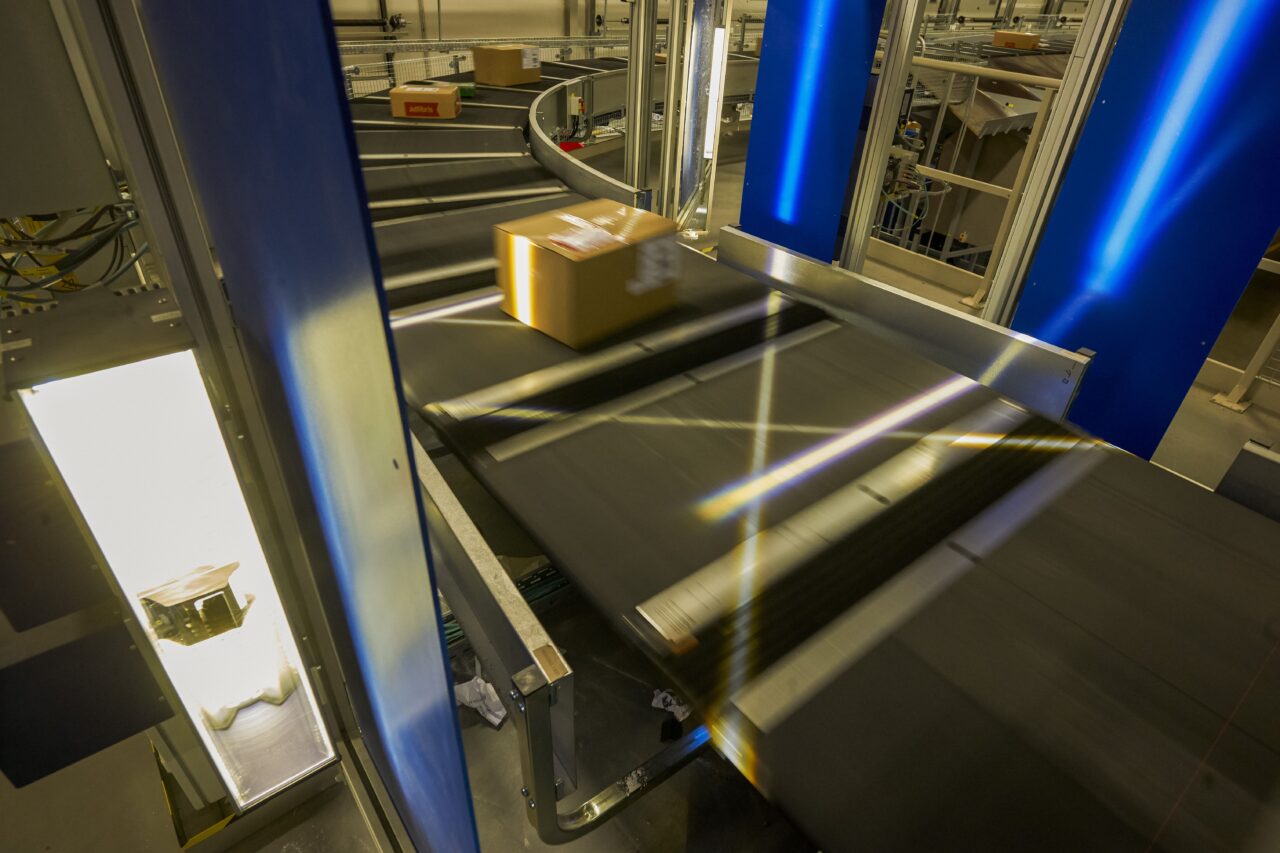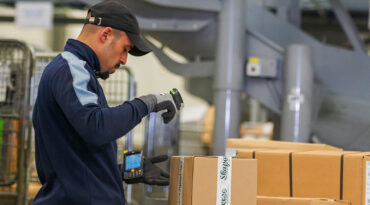Cloud-based Google Vision AI technology is used to extract the readable text from the labels, which is then matched with sort keys used in the sort plan. Sortation logic then completes the process. In total, it takes 3-4 seconds.
It’s so fast that parcels don’t need to recirculate in a loop system. Furthermore, at this speed it also makes it possible to apply Cloud-based OCR to line sorter-based systems.
Perfect fit for wide range of customers
The Cloud-based OCR also increases capacity. Parcels with unreadable barcodes can end up remaining on the sorter for long periods – literally lost in the loop.
And the Cloud-based OCR is also a great fit for companies that have huge fluctuations in their parcel sortation rates – for example, mid-January compared to the run-up to Black Friday or Christmas – which makes it a win-win for both peak and low capacity requirements situations.
During peak scenarios using Cloud-based OCR, the parcel is only on the system once. If Cloud-based OCR isn’t used, there’s a risk it gets thrown into the rejects for manual handling, but as soon as the parcel goes into the system twice, then capacity is lost.
Meanwhile, in the low throughput scenarios you don’t need to have a lot of people on standby in case there is a parcel that cannot be read.
TAKEAWAY
The beauty of the Cloud-based OCR solution is that it is giving both large and small CEP operators the opportunity to save money without the need for much investment – at a time when costs are increasing in almost every component of the business.
Passing on the cost of handling the parcels to customers is not a viable option. Only an internal optimisation of the sortation system will increase the profit per parcel.
It really is a case of ‘every little thing helps’. It might look like a small matter on paper, but as a part of the bigger picture, it will decrease the cost of operation whilst adding to the profit.
Furthermore, using the Cloud-based OCR is a smarter use of resources at a time when staff are becoming harder to find.




